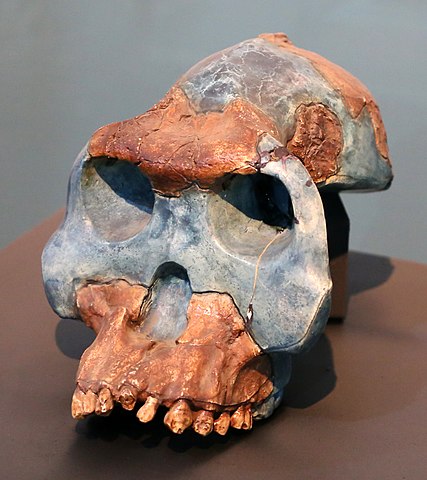Australopithecus garhi is an extinct hominin species that lived around 2.5 million years ago. The discovery of Australopithecus garhi is significant in understanding the diversity of early hominins and their evolutionary relationships. Here’s an overview of the discovery and significance of Australopithecus garhi:
Discovery:
- Location: Fossils of Australopithecus garhi were discovered in the Bouri Formation of the Afar Triangle in Ethiopia. The specific site is known as Bouri, and it has yielded important hominin fossils.

- Lead Researcher: The discovery was led by an international team of paleoanthropologists, with the Ethiopian paleoanthropologist Berhane Asfaw playing a key role.
- Timing of Discovery: The initial discoveries were made in 1996, with subsequent excavations uncovering more fossil specimens.
Fossil Finds:
- Type Specimen (BOU-VP-12/130): The type specimen of Australopithecus garhi is a partial cranium with associated postcranial elements, including limb bones. The fossils include parts of the skull, upper limb, lower limb, and hand bones.
- Associated Fauna: The Bouri site also yielded animal fossils and stone tools associated with Australopithecus garhi. The co-occurrence of hominin fossils, animal remains, and tools provides a broader context for understanding the hominin’s behavior and environment.
Morphological Features:
- Brain Size: Australopithecus garhi had a cranial capacity estimated to be around 450 cubic centimeters, which is larger than that of some other australopithecines but smaller than later Homo species.
- Dental Characteristics: The species displayed a combination of dental features, including relatively small molars and premolars, as well as larger anterior teeth. These dental features suggest adaptations to a mixed diet.
- Limbs and Postcranial Skeleton: The limb bones of Australopithecus garhi showed a mix of adaptations, indicating both arboreal and terrestrial behaviors. The hand bones suggested some grasping capabilities, and the upper limb bones indicated a mix of primitive and more derived traits.
Significance and Implications:
- Diversity of Australopithecines: The discovery of Australopithecus garhi adds to the diversity of australopithecines during the Pliocene epoch. It represents a species with a unique combination of features not found in other australopithecines.
- Tool Use: The association of stone tools with Australopithecus garhi fossils raises questions about the cognitive abilities and tool-use behavior of early hominins. While the tools are crude Oldowan-type tools, their presence suggests a level of technological sophistication.
- Ecological Context: The discovery contributes to our understanding of the paleoenvironment and ecological context in which Australopithecus garhi lived. The coexistence of hominins with other fauna provides insights into the broader ecosystem.
- Evolutionary Relationships: Australopithecus garhi is considered by some researchers to be a potential ancestor or closely related to the Homo lineage. Its position in the hominin family tree is still a subject of ongoing research and discussion.
- Temporal Placement: The temporal placement of Australopithecus garhi (around 2.5 million years ago) coincides with a period of significant transitions in hominin evolution, including the emergence of early Homo species.
The discovery of Australopithecus garhi represents a valuable contribution to our understanding of the complex mosaic of early hominin diversity and the factors that shaped the evolution of our ancestors. Ongoing research and further discoveries in the field of paleoanthropology continue to refine our knowledge of human evolutionary history.











